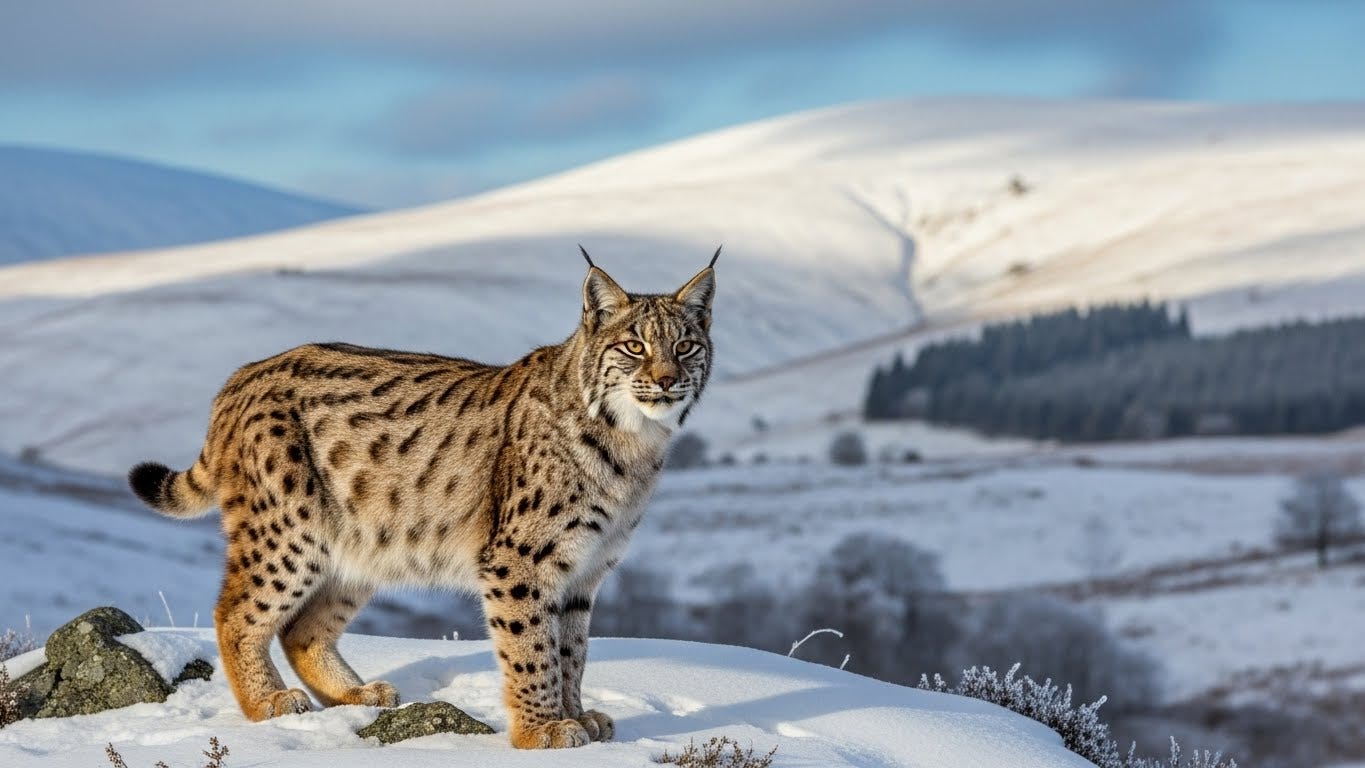On a recent episode of BBC Radio 4’s Today programme, Dr Rob Stoneman of The Wildlife Trust shared a vision that could transform Britain’s wild spaces: the reintroduction of the Eurasian Lynx. Extinct in the UK for hundreds of years, this shy and elusive forest cat - about the size of a slim Labrador, with golden fur and striking black tufts - could once again roam the woodlands of Northumberland.
It’s an idea rooted in both ecological science and public consultation. After years of research, the Wildlife Trust found that 72% of local residents support the return of lynx to their landscapes. Why? Because species reintroduction isn’t just about one animal – it’s about restoring balance.
A Forest’s Silent Guardian
The lynx is a natural predator of deer. As Dr Stoneman explained, deer can overgraze woodlands, stripping young trees and plants before they have a chance to grow. When a predator like the lynx is present, deer move more cautiously and graze more selectively. This "landscape of fear" leads to more diverse, resilient woodlands – havens for birds, insects, fungi, and other wildlife.
It’s a perfect example of trophic rewilding – letting nature’s own systems do the work of restoration.
But What About the Farmers?
Concerns from sheep farmers are valid, and the Wildlife Trust has tackled them head-on. Evidence from countries like Slovenia and Croatia shows that lynx predation on sheep is extremely rare – just one or two sheep per year, if any. That’s because lynx are forest hunters, and sheep in the UK typically graze in open fields. Still, steps are being taken to work with farmers, create safeguards, and offer reassurance.
And then there are the potential upsides: eco-tourism. Places that host lynx, even if they’re rarely seen, report increased visitor numbers. People are drawn to the idea of wilderness reborn. They come for the stories, the possibility, the magic.
How LettsSafari Fits In
At LettsSafari, we’re championing the return of native species in our own way. From small-scale rewilding parks to community-led biodiversity projects, we believe in rebuilding nature’s web – one habitat at a time.
While we don’t have lynx (yet!), the principle is the same. Reintroducing keystone species whether it’s a wildflower that feeds pollinators, a hedgehog that eats garden pests, or a beaver that reshapes waterways strengthens the whole ecosystem.
Nature works in layers, and every species counts.
A Roar for the Future?
Dr Stoneman called it “bringing back part of the jigsaw of life.” And that’s exactly it. The lynx may be elusive, but its impact could be profound – on the land, on local economies, and on our shared connection with the wild.
LettsSafari is proud to be part of this growing movement. Whether it’s a lynx in Northumberland or a hedgerow in your garden, rewilding works. And the time to act is now.



